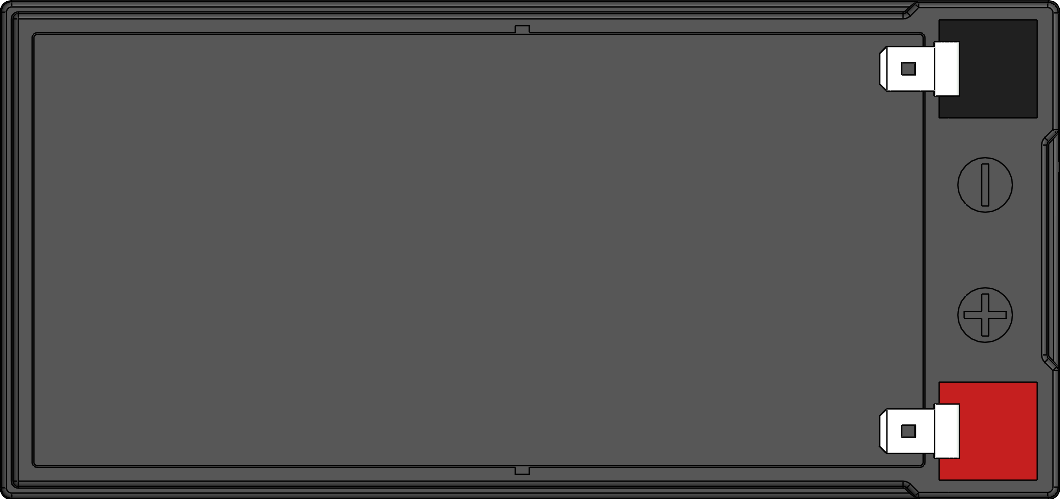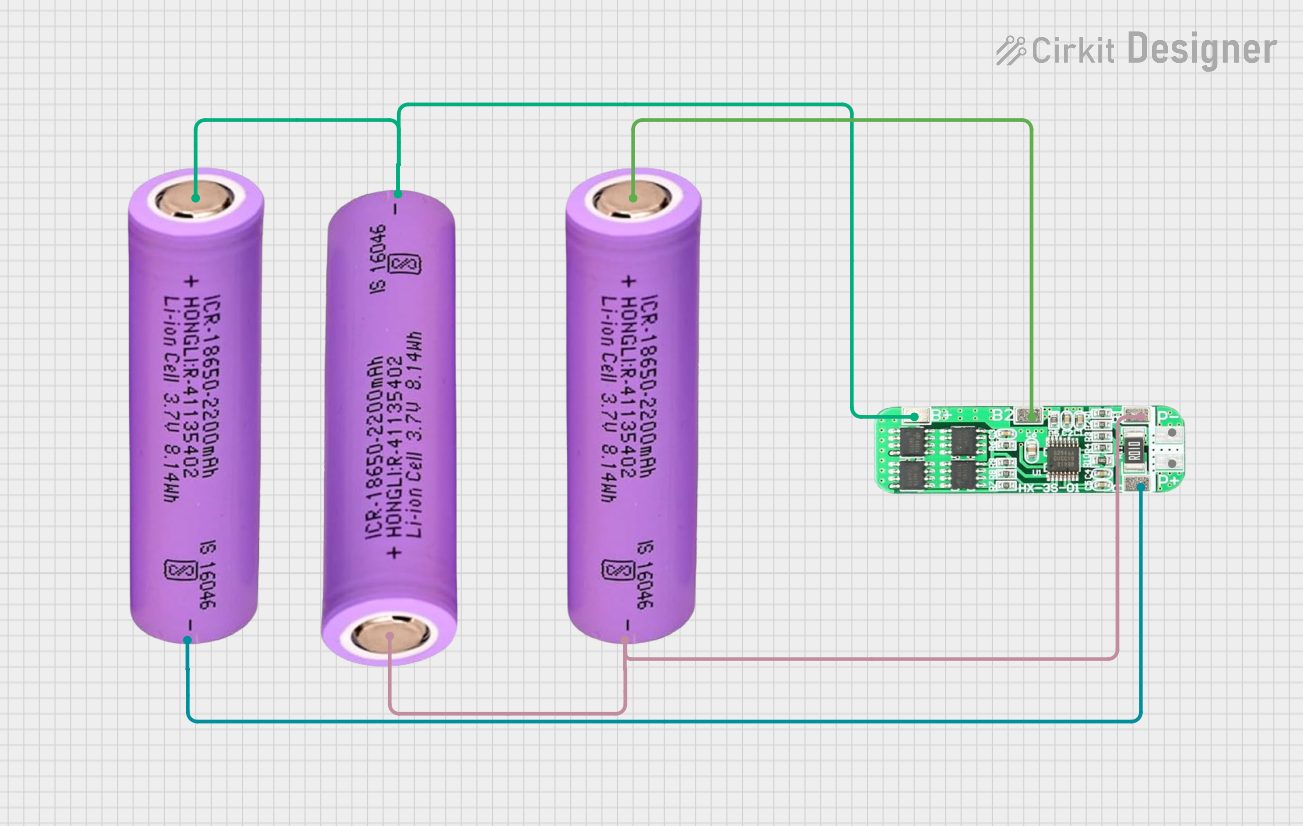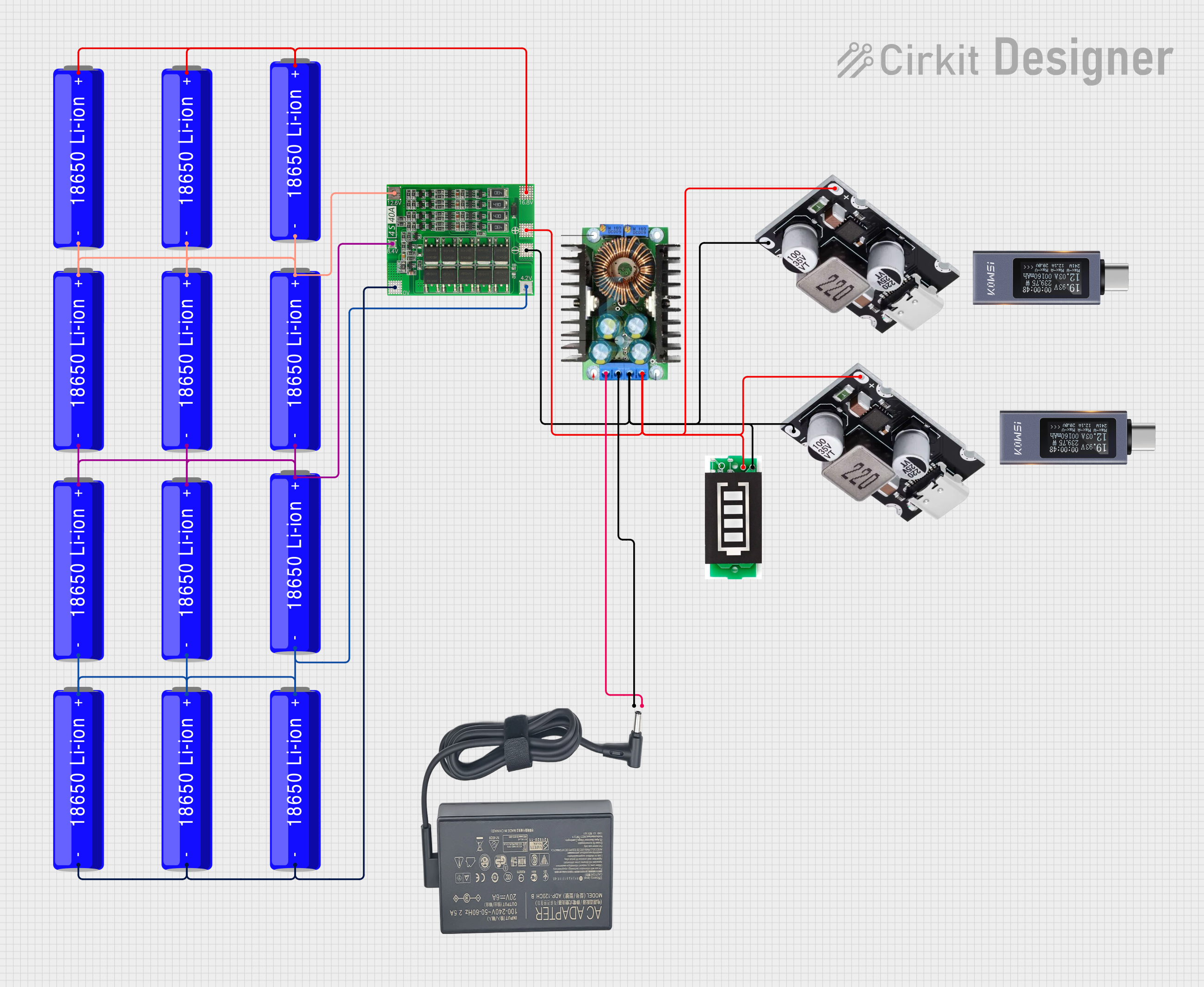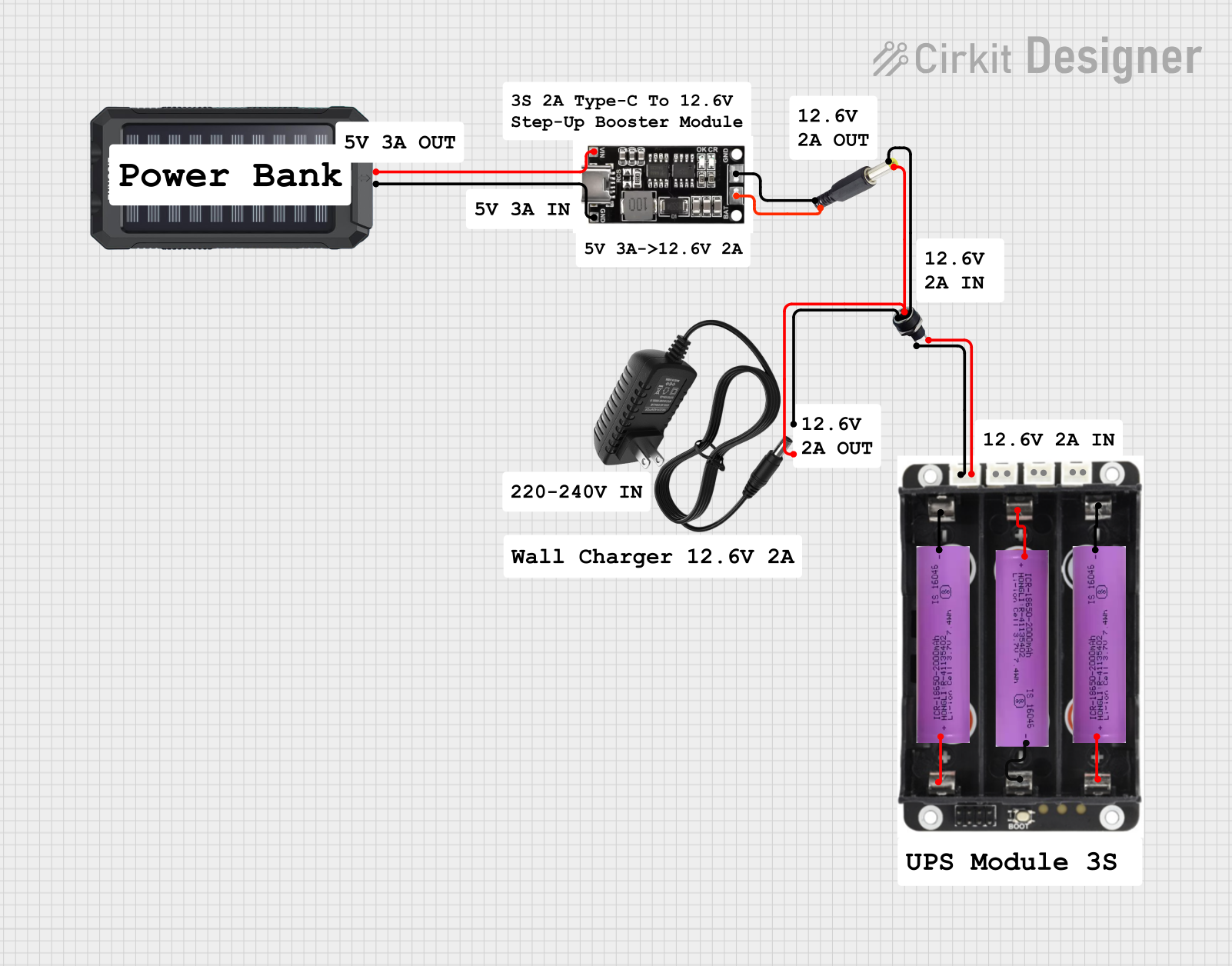
How to Use 12.8V 30000mAh 3C 4S5P LiFePO4 Battery Pack: Examples, Pinouts, and Specs

 Design with 12.8V 30000mAh 3C 4S5P LiFePO4 Battery Pack in Cirkit Designer
Design with 12.8V 30000mAh 3C 4S5P LiFePO4 Battery Pack in Cirkit DesignerIntroduction
The 12.8V 30000mAh 3C 4S5P LiFePO4 Battery Pack (Manufacturer: Pro-Range, Part ID: IFR 32650) is a high-performance rechargeable lithium iron phosphate (LiFePO4) battery pack. It features a nominal voltage of 12.8V, a capacity of 30,000mAh, and a discharge rate of 3C. The pack is constructed using 4 cells in series (4S) and 5 cells in parallel (5P), ensuring high energy density, long cycle life, and enhanced safety.
Explore Projects Built with 12.8V 30000mAh 3C 4S5P LiFePO4 Battery Pack

 Open Project in Cirkit Designer
Open Project in Cirkit Designer
 Open Project in Cirkit Designer
Open Project in Cirkit Designer
 Open Project in Cirkit Designer
Open Project in Cirkit Designer
 Open Project in Cirkit Designer
Open Project in Cirkit DesignerExplore Projects Built with 12.8V 30000mAh 3C 4S5P LiFePO4 Battery Pack

 Open Project in Cirkit Designer
Open Project in Cirkit Designer
 Open Project in Cirkit Designer
Open Project in Cirkit Designer
 Open Project in Cirkit Designer
Open Project in Cirkit Designer
 Open Project in Cirkit Designer
Open Project in Cirkit DesignerCommon Applications
- Solar energy storage systems
- Uninterruptible Power Supplies (UPS)
- Electric vehicles (EVs) and e-bikes
- Portable power stations
- Robotics and industrial equipment
- Marine and RV power systems
Technical Specifications
Key Technical Details
| Parameter | Value |
|---|---|
| Nominal Voltage | 12.8V |
| Capacity | 30,000mAh (30Ah) |
| Discharge Rate | 3C (90A maximum continuous) |
| Charge Voltage | 14.6V (maximum) |
| Cut-off Voltage | 10.0V |
| Cell Configuration | 4S5P |
| Chemistry | Lithium Iron Phosphate (LiFePO4) |
| Cycle Life | >2000 cycles (at 80% DOD) |
| Operating Temperature | -20°C to 60°C (discharge) |
| Storage Temperature | -10°C to 45°C |
| Dimensions | Varies by manufacturer design |
| Weight | Approx. 4.5kg (varies) |
Pin Configuration and Descriptions
The battery pack typically includes the following terminals and connections:
| Pin/Terminal | Description |
|---|---|
| Positive (+) | Positive terminal for power output |
| Negative (-) | Negative terminal for power output |
| BMS Port | Connection to the Battery Management System (BMS) for monitoring and protection |
| Balance Leads | Leads for cell balancing during charging |
Note: The exact pin configuration may vary depending on the specific design of the battery pack. Always refer to the manufacturer's datasheet for detailed wiring diagrams.
Usage Instructions
How to Use the Component in a Circuit
Connection to Load:
- Connect the positive (+) and negative (-) terminals of the battery pack to the load or device.
- Ensure the load does not exceed the maximum continuous discharge current (90A).
Charging the Battery:
- Use a LiFePO4-compatible charger with a maximum charge voltage of 14.6V.
- Ensure the charger supports the required charge current (e.g., 0.5C or 15A for optimal charging).
Battery Management System (BMS):
- The battery pack includes a built-in BMS for overcharge, over-discharge, and short-circuit protection.
- Connect the BMS port to a compatible monitoring system if required.
Cell Balancing:
- During charging, the BMS ensures cell balancing to maintain consistent voltage across all cells.
Important Considerations and Best Practices
- Avoid Overcharging: Do not exceed the maximum charge voltage of 14.6V to prevent damage.
- Avoid Deep Discharge: Do not discharge below the cut-off voltage of 10.0V to extend cycle life.
- Temperature Management: Operate the battery within the specified temperature range to ensure safety and performance.
- Storage: Store the battery at 50% charge in a cool, dry place if not in use for extended periods.
- Wiring: Use appropriately rated wires and connectors to handle the high current output.
Example: Connecting to an Arduino UNO
The battery pack can power an Arduino UNO via a DC-DC step-down converter to regulate the voltage to 5V. Below is an example circuit and code:
Circuit Diagram
- Connect the battery pack's positive (+) and negative (-) terminals to the input of a DC-DC step-down converter.
- Set the output of the converter to 5V.
- Connect the 5V output to the Arduino UNO's 5V and GND pins.
Arduino Code Example
// Example code to blink an LED using Arduino UNO powered by the LiFePO4 battery pack
const int ledPin = 13; // Pin connected to the onboard LED
void setup() {
pinMode(ledPin, OUTPUT); // Set the LED pin as an output
}
void loop() {
digitalWrite(ledPin, HIGH); // Turn the LED on
delay(1000); // Wait for 1 second
digitalWrite(ledPin, LOW); // Turn the LED off
delay(1000); // Wait for 1 second
}
Note: Ensure the DC-DC converter is properly configured to output 5V before connecting to the Arduino UNO.
Troubleshooting and FAQs
Common Issues and Solutions
| Issue | Possible Cause | Solution |
|---|---|---|
| Battery not charging | Charger not compatible or faulty | Use a LiFePO4-compatible charger |
| Low runtime | Over-discharge or aging cells | Avoid deep discharge; replace if aged |
| Overheating during use | Exceeding maximum discharge current | Reduce load or use a higher-capacity pack |
| Uneven cell voltages | Faulty BMS or cell imbalance | Check BMS; ensure proper balancing |
FAQs
Can I use this battery pack for solar energy storage?
- Yes, the battery pack is ideal for solar energy systems due to its long cycle life and stable performance.
What happens if I overcharge the battery?
- The built-in BMS prevents overcharging, but using a compatible charger is essential to avoid damage.
How do I extend the battery's lifespan?
- Avoid deep discharges, overcharging, and operating outside the recommended temperature range.
Can I connect multiple packs in series or parallel?
- Yes, but ensure proper balancing and use a compatible BMS for series/parallel configurations.
By following these guidelines, you can safely and effectively use the 12.8V 30000mAh 3C 4S5P LiFePO4 Battery Pack in your projects.